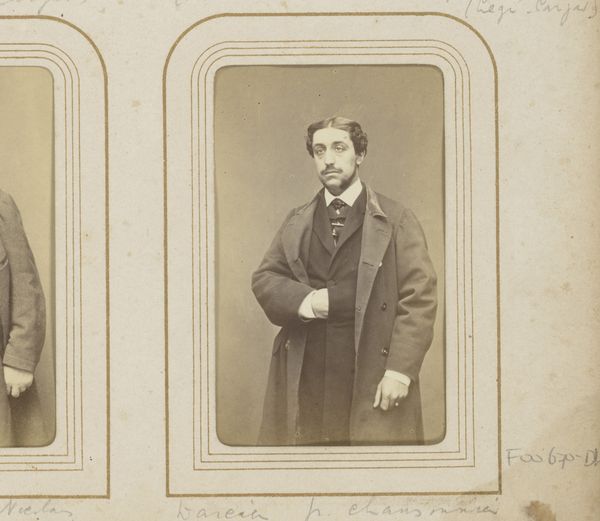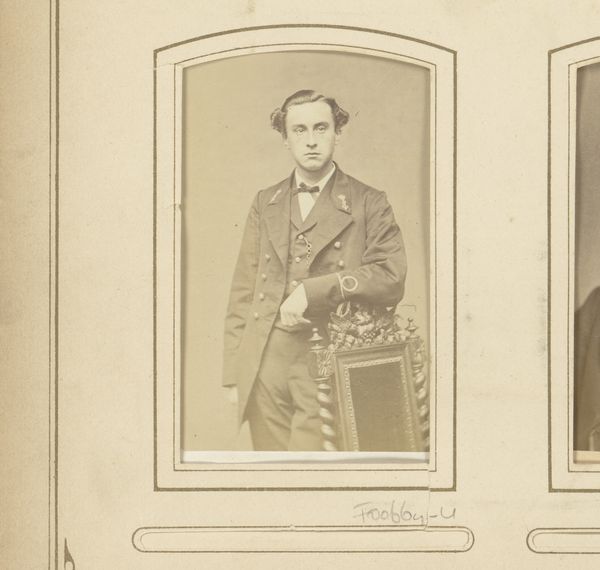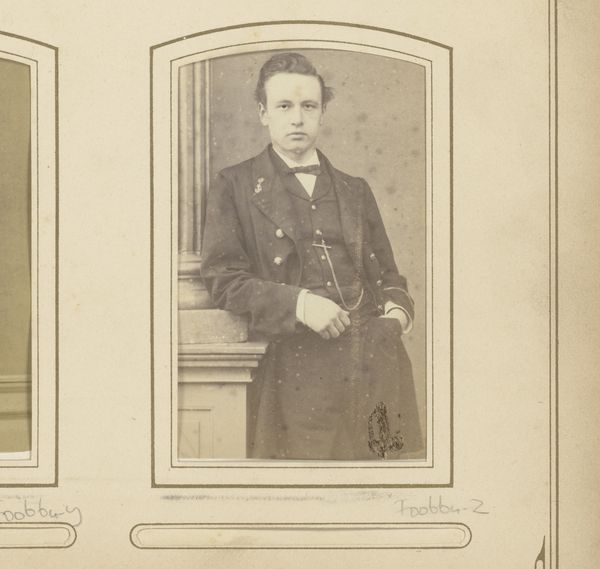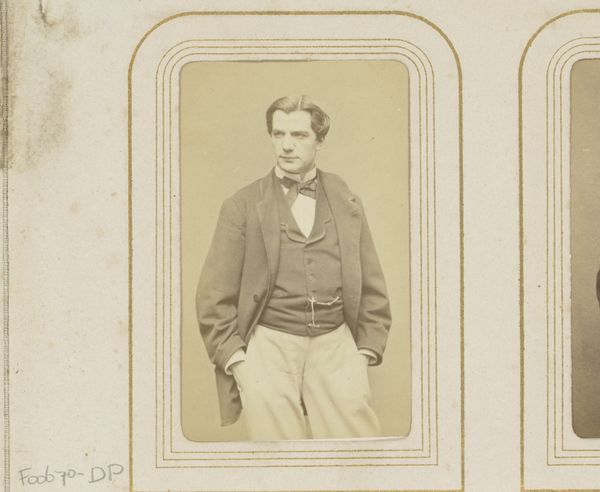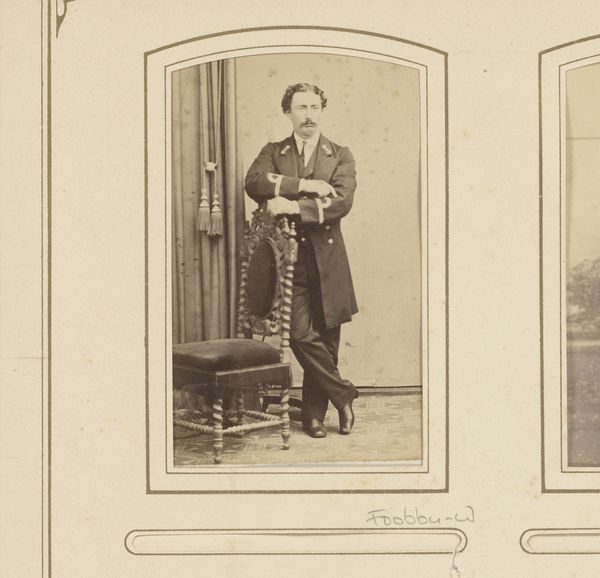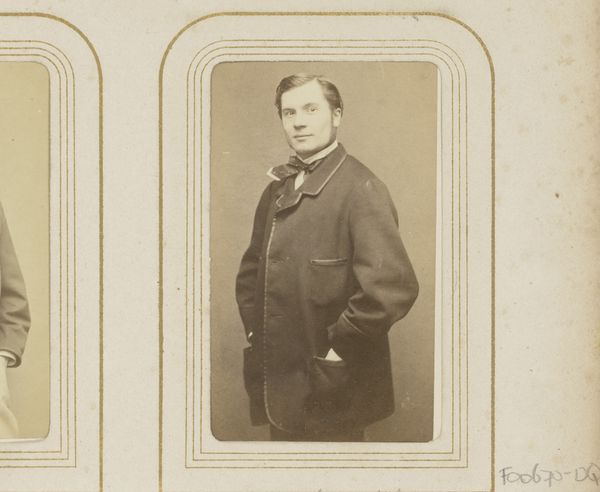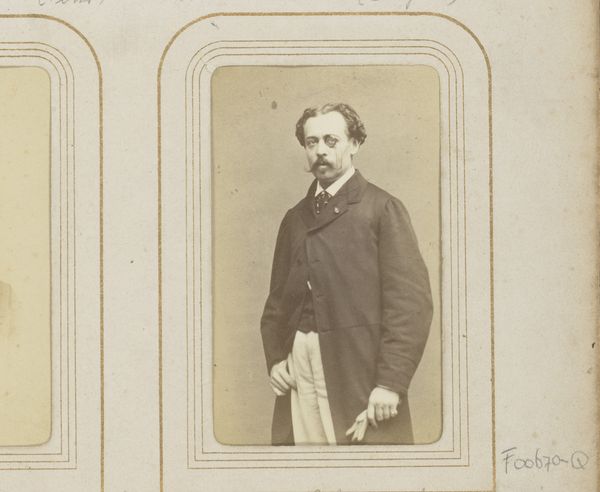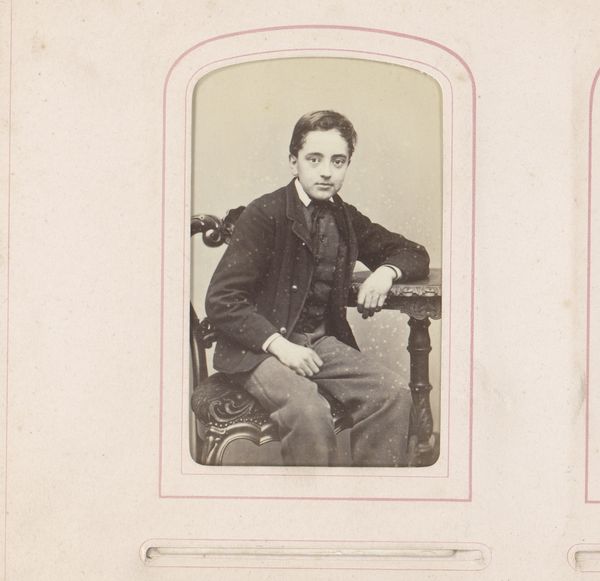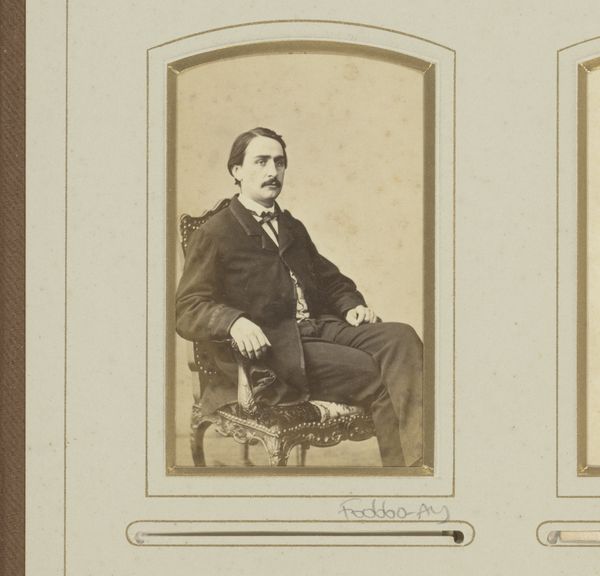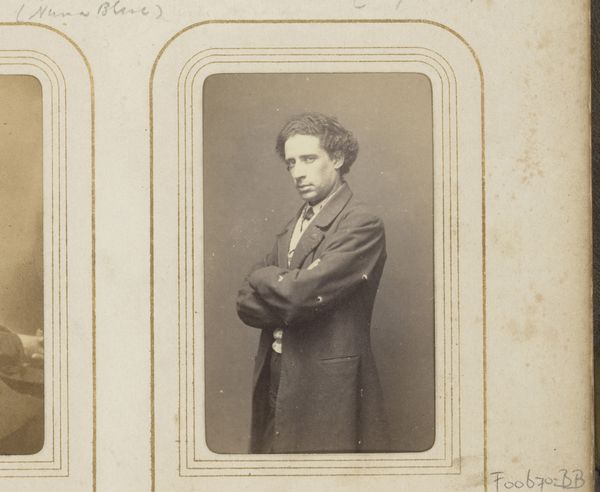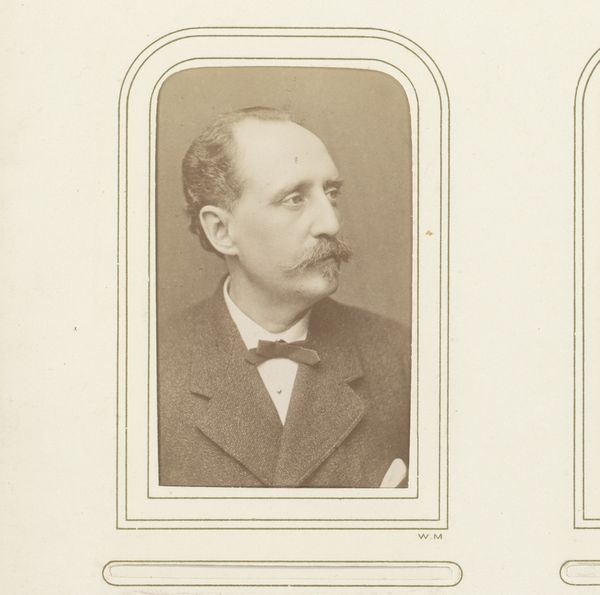
daguerreotype, photography
#
portrait
#
daguerreotype
#
photography
#
historical photography
#
19th century
#
realism
Dimensions: height 84 mm, width 51 mm
Copyright: Rijks Museum: Open Domain
Editor: This is "Portret van Victor Capoul" taken between 1861 and 1867 by Carjat et Cie., a daguerreotype at the Rijksmuseum. It has such a wistful quality. I'm curious, what social contexts shaped this kind of photographic portraiture in the 19th century? Curator: That's a great question. Consider the rise of photography itself. It democratized portraiture, making it accessible to the middle class in ways that painting never could. These images became tools for social climbing, for defining one's place in a rapidly changing society. The framing of the subject, Victor Capoul, suggests the careful curation of identity that photography facilitated. How might that have changed the art world? Editor: It definitely made images more accessible to a wider audience, moving away from wealthy patrons, impacting both artists and how art was being received, but did this change the idea of art itself? Curator: Precisely. What’s interesting is that these daguerreotypes coincided with a time of considerable cultural upheaval. Photography as an artform and as an accessible form of portraiture served a societal desire to fix and preserve particular kinds of public memory and individual and social standing in an increasingly complex and globalizing society. Consider Capoul’s pose. Do you see anything meaningful in it? Editor: He looks pensive, almost theatrical, which strikes me as odd for a realistic medium, and almost artificial given its claim to objectivity. Curator: Exactly. It exposes the constructed nature of photography, despite its seeming objectivity. So, do you think the portrait itself served a specific purpose or helped Victor’s social status? Editor: Perhaps both. It solidified Capoul’s image in a growing public sphere but it also challenged notions of objective truth. Curator: That’s right. The very act of image-making in this medium became a point of debate about the nature of realism and the role of art in constructing identities and documenting history. Editor: It's fascinating to think about how the emergence of photography affected society’s relationship to representation. It almost gives us an understanding of today’s society. Thanks!
Comments
No comments
Be the first to comment and join the conversation on the ultimate creative platform.
